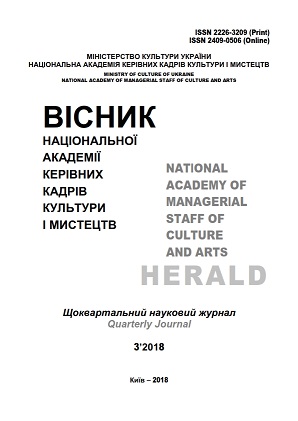Принципи втілення мотиву-монограми DEsCH у творчості Едісона Денисова
The Principles of Translating the Motif-Monogram DEsCH in the Work of Edison Denisov
Author(s): Xuemin ZhuSubject(s): Music, Semantics, Translation Studies, History of Art
Published by: Національна академія керівних кадрів культури і мистецтв
Keywords: monogram; code; D. Shostakovich; DeSCH; dedication; serial work;
Summary/Abstract: The purpose of the article is a comprehensive consideration of the problem of compositional-semantic functioning of the motif-monogram DeSCH in a number of selected works of Edison Denisov, namely the play «DЕSCH» for clarinet, trombone, horn and piano, sonatas for saxophone and piano and flute concerto. Methodology. The work uses a complex method, including itself historical-biographical, semiotic, comparative and analytical approaches. The scientific novelty of the study is that for the first time the works of Edison Denisov’s offerings to Dmitry Shostakovich are regarded as a holistic phenomenon and an important component of the composer’s creative legacy. The functioning of the monogram motif in Denisov’s works is presented as a systemic phenomenon in the context of the early period of creativity. Conclusions. The monogram DеSCH is used by E. Denisov in his work as an element semantically significant, which indicates the composer’s conscious/ntentional approach to it. In its application, the priority of the serial method is evident. In addition, there is a definite evolution of the functioning of DeSCH in the early works of E. Denisov. The author’s «I» by E. Denisov is not so much opposed to «alien» monograms, as to how they relate to them as different, but possible variants of the solution of a single artistic task.
Journal: Вісник Національної академії керівних кадрів культури і мистецтв
- Issue Year: 2018
- Issue No: 3
- Page Range: 410-415
- Page Count: 6
- Language: Russian

